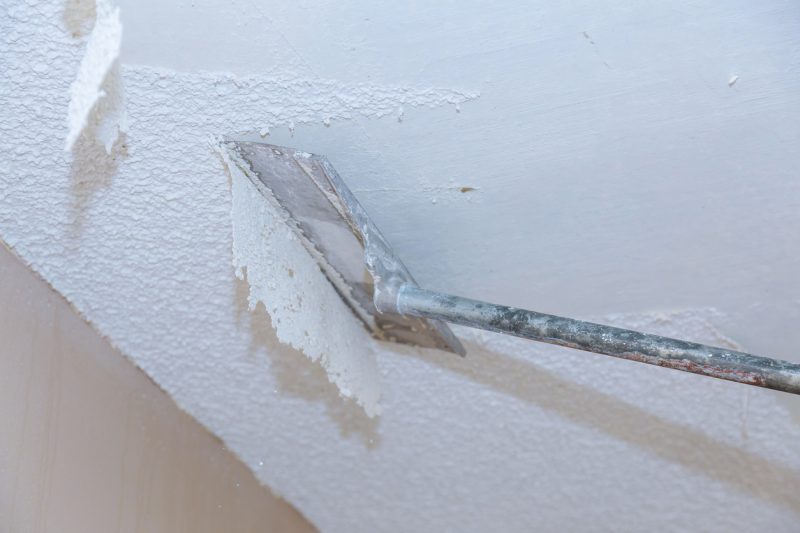I love popcorn, just not on my ceiling! Popcorn ceilings are a trick of the trade in home building to speed up the construction process and not spend as much time finishing the surface.
How To Remove A Popcorn Ceiling
But alas, it has faded from style and there a lot I mean a lot of homes with this application. Here is how to remove it safely.
-
Remove as much of, if not all the items in the room where the ceiling needs to be refinished.
-
Rent or purchase a rolling scaffolding unit that will allow you enough height to reach the ceiling. You’ll be working over your head a lot. Lay tarps on the entire floor because this will be a mess. Do not overreach, that’s why the scaffolding rolls.
-
Add hot water to a pump sprayer and apply a good mist to a section of the ceiling about 4×4 and let soak in for about 10 minutes. Then using a 6” wide flexible metal scrapper start scraping. Wear a hat and eye protection and a dust mask is not a bad idea either.
-
Work in sections and try to just apply enough pressure to remove the popcorn portion of the ceiling and avoid gouging the drywall.
-
After it is all removed and cleaned up use joint compound to touch up seams, gouges and other imperfections on the surface of the drywall.
-
Sand everything smooth. A bright shop light will help you see imperfections that need attention. Then prime the entire ceiling using a PVA primer. Inspect once dry for any touch-ups with joint compound.
-
Paint your new smooth ceiling with a high-quality ceiling paint and a 3/8” nap roller.



